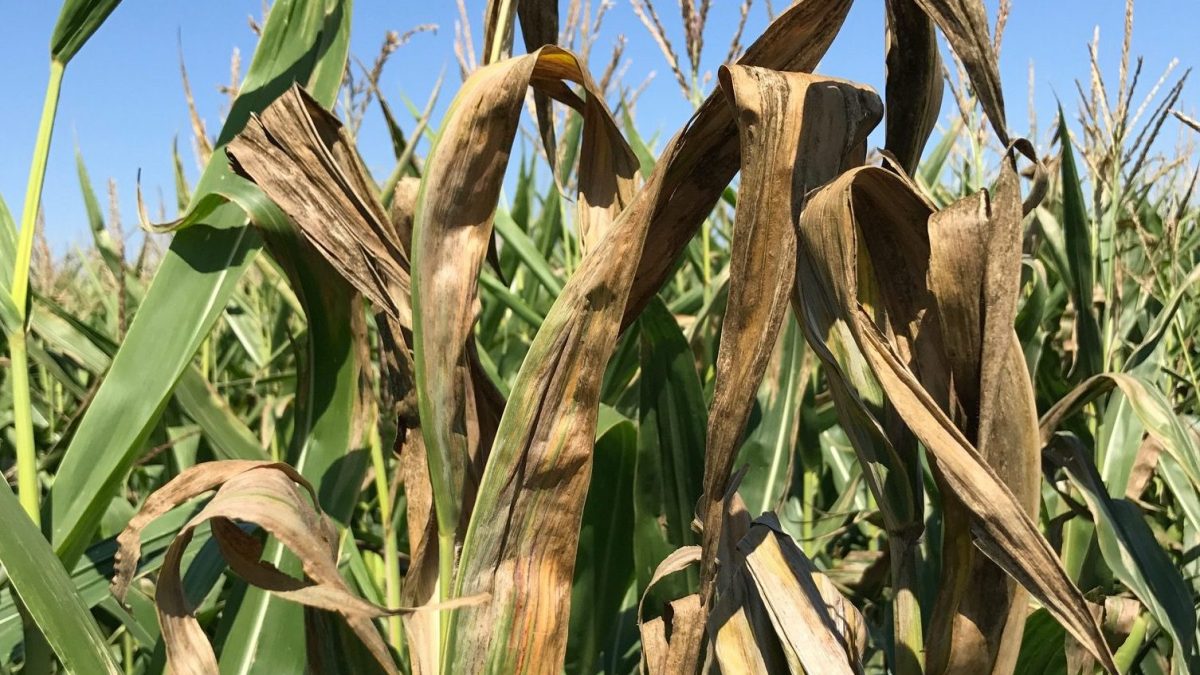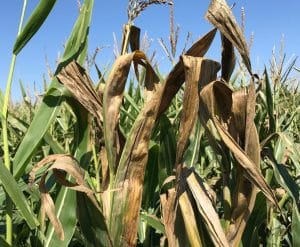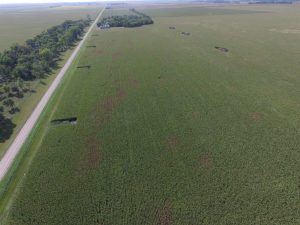Goss’s Wilt Can be Prevented Today with 3 Key Steps

The snow is melting and the black of the fields in the Red River Valley is starting to show through. Although corn planting is still a ways off, right now is the perfect time to protect your corn acres from the toughest disease to handle: Goss’s Wilt. Before a piece of machinery awakes from its winter hibernation, the time to fight Goss’s Wilt is now. Doing everything possible to preserve yield is essential with the current state of corn prices and this is one simple and proactive way to do so.
The prevalence of Goss’s Wilt has been increasing over the last few years, mainly due to the general increase in corn acres in North Dakota and farmers planting susceptible hybrids, which can affect the field and neighboring fields for seasons to come. Central Minnesota and South Dakota have struggled with this disease for years and because of the factors just mentioned, Goss’s Wilt has made its way into North Dakota.
Be Proactive Before Planting
There are 3 key decisions you can make right now to prevent Goss’s Wilt in your field this summer.
The first decision, and one that can be made long before spring arrives, that can greatly reduce the presence of the disease next year is to rotate to a non-host crop such as soybeans or edible beans. If you do plan to rotate be sure to remember that neighboring fields can be greatly affected due to infected corn residue blowing and moving to adjacent fields.
Secondly, good tillage practices (plowing is most effective) will reduce the presence of the disease in years to follow. Burying the infected crop residue minimizes the potential for disease survival and infection the following year.
The third, and, in my opinion, most important decision when planning corn acres, is selecting corn hybrids with high tolerance to Goss’s Wilt. Our corn genetics selection team places a very high priority on choosing products that are tolerant to Goss’s Wilt. In fact, every new cross in our lineup has good to very good ratings.
Why Defense Doesn’t Win
Fungicides provide very little help fighting Goss’s Wilt. If found in a field, there is little that can be done to manage the disease in the current growing season, which is why it’s vitally important to take the steps to prevent the disease before it happens. Choosing corn hybrids with the highest possible tolerance and rotating to a non-host crop such as soybeans or edible beans into your planting plan are two ways to stop Goss’s Wilt before it starts.
By being diligent with your farming practices, rotations, and scouting, winning the fight against this disease can be easier. And, as always, if you suspect that Goss’s Wilt is present in any of your fields, please feel free to contact any of us at Peterson Farms Seed to come and take a look.
What are the Signs and Symptoms of Goss’s Wilt?
A corn plant can show two different symptoms of Goss’s Wilt: systemic plant wilt and leaf blight. Leaf blight is most commonly observed with initial symptoms of what looks like dark green or black water-soaked spots on the leaf, commonly referred to as freckling. As the disease progresses, the bacteria on the leaf will ooze, leaving a shiny varnished look after it has dried. Later, oblong sections of dead plant tissue will be observed on the leaf.

The disease can also infect the vascular tissue and move systemically throughout the plant, but this is less common in the north. A systemic infection is identified by splitting the stalk and observing vascular discoloration or stalk rot. A systemic infection of Goss’s Wilt will more than likely lead to plant death.
Goss’s Wilt survives and overwinters on corn residue which is why it is often found in fields that are corn following corn. Goss’s will infect the plant through an open wound anywhere on the plant. These wounds often are caused by hail and high winds.
Scouting should be done throughout the growing season and monitored closely if the disease is discovered. Once confirmed, using a drone is useful to assess the severity and size of the affected area. It is easy to see the brown, infected areas from above to help determine how many acres are affected.

Using a drone to spot brown patches is an effective way to assess the spread of Goss’s Wilt.











